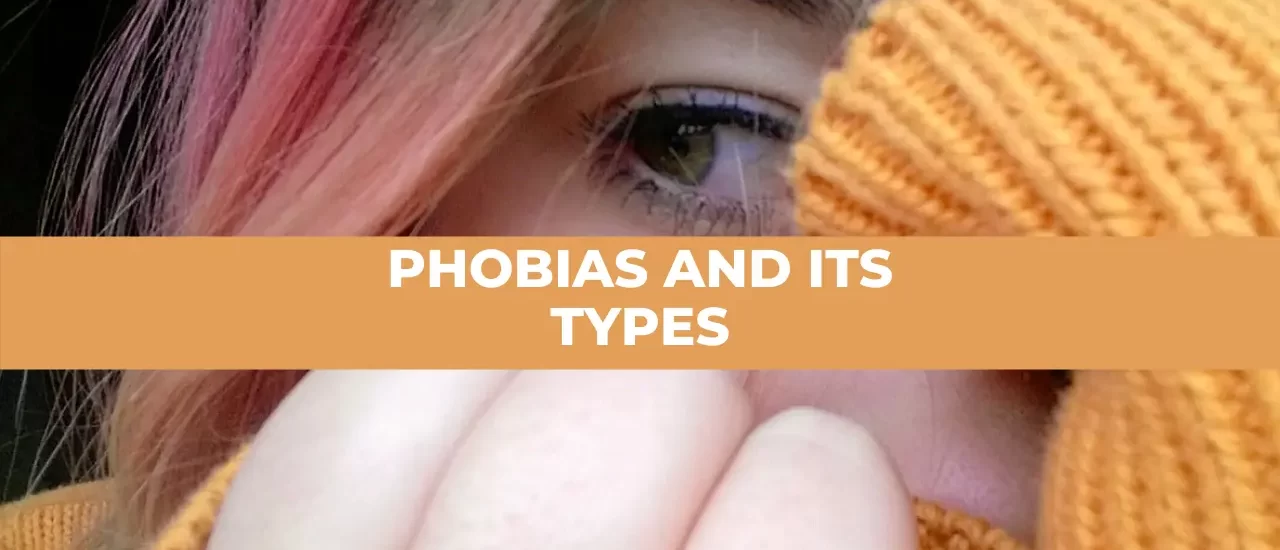

wordpress-seo domain was triggered too early. This is usually an indicator for some code in the plugin or theme running too early. Translations should be loaded at the init action or later. Please see Debugging in WordPress for more information. (This message was added in version 6.7.0.) in /home/sehatnagar.com/public_html/wp-includes/functions.php on line 6114
A phobia is a persistent, extreme, unrealistic fear of an object, person, animal, activity or situation. It is a type of anxiety disorder. A person with a phobia either tries to avoid the thing that triggers the fear, or endures it with great anxiety and distress. People who have a phobia are well aware that their fear is irrational. Having a phobia does not mean that someone is scared of something. People with phobias have an exaggerated fear response. People who have specific phobia shows fear according to that and mostly they try to stay away from these things.
There are three major types of phobias
A specific phobia is an unrealistic or extreme fear of a specific situation, object, or place. These fears are persistent and cause those with the phobia to avoid situations in which exposure might occur and phobias can start at any age but usually occur in childhood or in a young age. For example, one may have a phobia of medical or dental visits, heights, flying, elevators, or spiders. Basically these are the anxiety phobias.
Zoophobia refers to a fear of animals. Most of the time, this fear is directed at a specific type of animal. However, it’s also possible for a person with zoophobia to fear all or many types of animals. There are some common animal phobias.
2. Medical Phobia
Most people suffer from a fear of medical procedures at some point in their lifetime, which can include the fear of surgery, dental work, doctors, or needles. Most individuals who experience phobias have an increased heart rate upon encountering the thing they fear, but blood, injection, injury-phobic people also seem to have an increase of fainting after the initial speeding up of heart rate. Their heart rate will go up and then slow again, leading to nausea, sweating, pallor, and fainting.
3. Height Phobia
Acrophobia is a mental health condition in which the individual experiences an intense fear of heights. A certain amount of concern around heights is normal for all people, and most people are more cautious than usual when they are at a significant height. Most of us may feel uneasy or a bit shaky if we look down from a tall height, such as from a bridge. But people with acrophobia experience intense and unreasonable fear when they’re faced with heights (riding, flying).
4. Natural Anxiety Phobia
Natural Anxiety phobi are external specific phobias of particular conditions in the natural environment. Natural environment phobias include:
It’s normal to feel nervous in some social situations. For example, going on a date or giving a presentation may cause that feeling of butterflies in your stomach. But in social anxiety disorder, also called social phobia, everyday interactions cause anxiety, self-consciousness and embarrassment because you fear being judged negatively by others. In social anxiety disorder, fear and anxiety lead to avoidance that can disrupt your life. Severe stress can affect your relationships, daily routines, work, school or other activities.
Agoraphobia is an anxiety disorder that causes excessive fear of certain situations. Some people may even resist leaving home. Because of fear and anxiety, people with agoraphobia often avoid new places and unfamiliar situations and peoples, such as:
Cognitive behavioral therapy (CBT) is the most commonly used therapeutic treatment for phobias. It involves exposure to the source of the fear in a controlled setting. This treatment can decondition people and reduce anxiety. The therapy focuses on identifying and changing negative thoughts, dysfunctional beliefs, and negative reactions to the phobic situation.
Medication can help you emotionally and physically. Both medication and therapy at the same time is the most helpful thing to overcome your anxiety.
Overcoming phobias can be difficult, but there’s hope. With the right treatment, you can learn to manage your fears and lead a productive, fulfilling life.